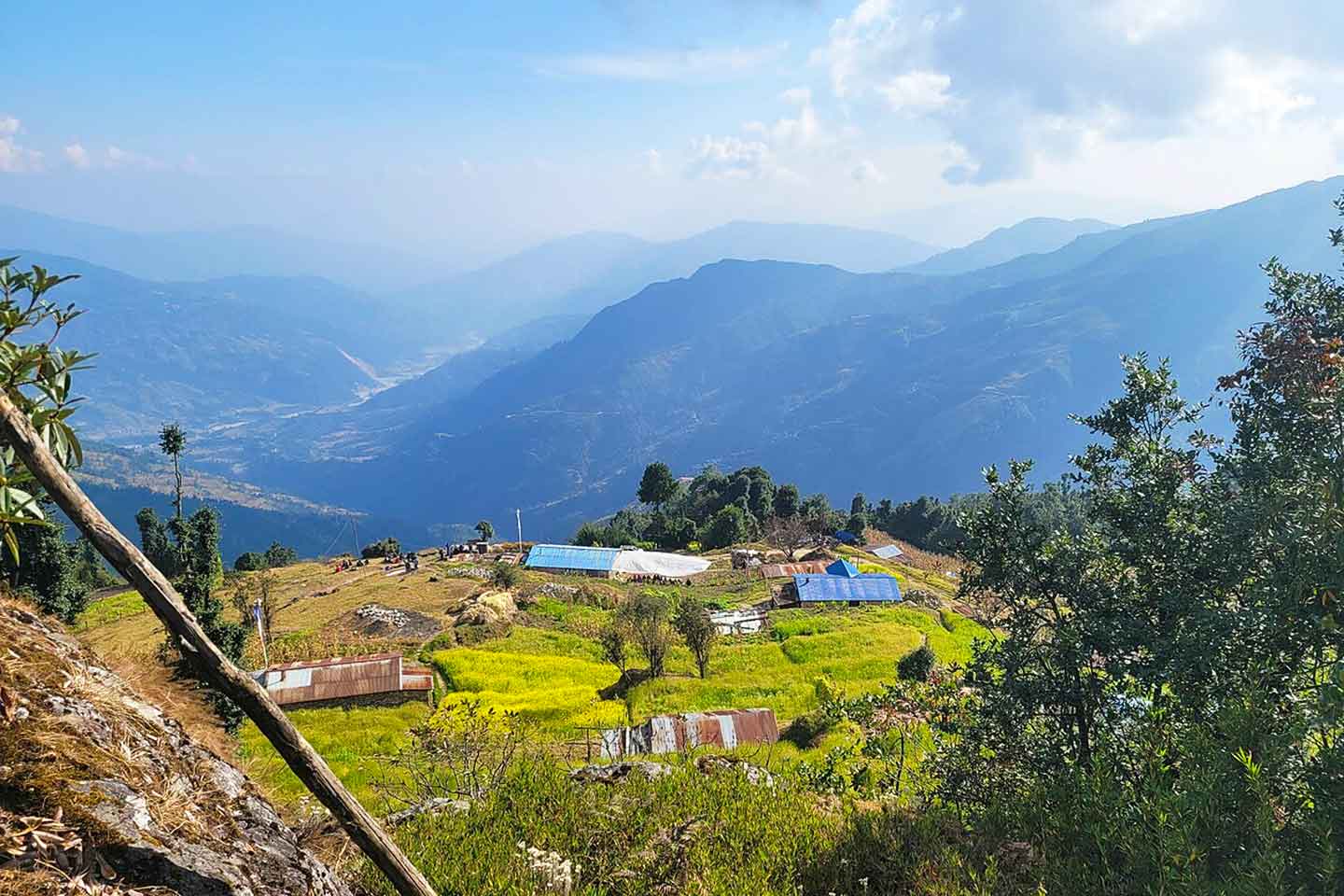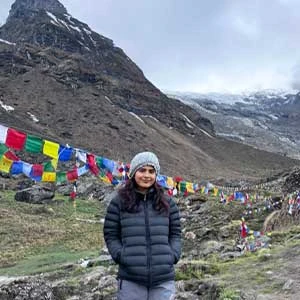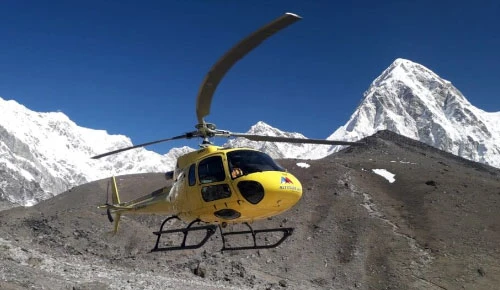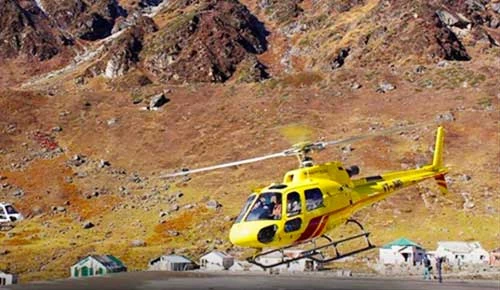Best Time for Helambu Trek
Helambu is surrounded by many other famous treks in Nepal, but those who have done this trek claim that there is something special about it. The Helambu trek in the Langtang region passes through remote villages full of culture, rhododendron forests, and ridges with lovely views of the Himalaya and will make you feel rested and lovely without the long travel days linked with trekking or the tough parts of elevation.
There is literally more to love than just the view, as even the sceneries change easily depending on the season. You could be walking one month under the sun among red and pink rhododendrons, and the very same path next month might be covered by snow and be completely tranquil. Every season in Helambu is a different one, and the way your visit affects how far you get into that season's story.

While some trekkers are drawn to crystal-clear mountain views, others long for the quiet of snow-capped villages. Some plan their trek to coincide with Nepali festivals, whereas others prefer to avoid muddy, rain-soaked paths. No matter what your reason is, there is at least one definite thing, and that is timing, without which a good trek could make way for a memorable one.
The timing of your Helambu trek isn’t only about staying clear of harsh weather; it’s about creating the experience you’ve been dreaming of.
So do you dream of trekking in spring blossoms? Do you want to be surrounded by fresh, cool autumn and mountain views? or Do you miss snow, silence, and no crowds?
Table of Contents
Seasons in Helambu of Nepal
This blog will break down the effects each season has on your hike, including temperature, weather conditions, and crowding on these trails, as well as plants and visibility. Whether you want a spring escape, fall adventure, or serene winter stroll, you can get enough insight on when to make your trek. Without further delay, we will explore the seasonal patterns of the Helambu and highlight the best time to fall in love with this lesser-known Himalayan trail.
The short trek to Helambu is not only dependent on the altitude and the geography, but it is also highly dependent on the rhythm of changing seasons. The hike up the trail, rising out of lowland tropical villages through to alpine ridges, brings major changes and epic transformations in temperature, vegetation, visibility, and even village life. That is why the time you go trekking could make or break your experience. The lower elevations might have warm and soggy weather, and a simple day hike away could be cool and misty or actually snowy. Seasonal transition affects trail safety, comfort, and the kind of vistas as well, whether it’s rhododendron blooms, monsoon waterfalls, or Himalayan blue.
There is a different color of Helambu every season. Spring makes the hills look like flowers. The monsoon season is when the valleys are thick and jungle-green. During the fall, the nation is covered with gold and shows the best scenery of the mountains. Winter blankets all of it with snow. And be it rich nature, cultural experiences, solitude, or clear-blue mountaintops, whatever it is that you are pursuing, the season you choose will either bring the most out of you or limit you.
How Does Each Season Impact Your Helambu Trek Experience?
Spring (March to May)
Spring in Helambu is often considered the best time to trek. As winter fades, the region bursts into color with vibrant rhododendron blooms painting the forests red, pink, and white. Temperatures are mild and comfortable, with daytime highs ranging from 10°C to 20°C and cool but manageable nights.
The paths usually maintain their dryness and are easily accessible, which means that the trekkers can walk on them with excellent shoes. It is a usual thing to find a blue sky during the day, which allows you to enjoy fantastic views of the Langtang and Dorje Lakpa ranges from where you trek. This time of the year is suitable for photographers, nature lovers, and those who would like to see the forest breathing after a deep sleep.

Although spring has moderate crowds as compared to off-season months, the trail is calm, with the villages full of people but not too congested. Teahouses and lodges in the area are active, and so visitors enjoy their warm hospitality. Spring is the sweetest spot that combines activity and the best two in terms of weather, scenery, and immersion in a world of local culture, at least among trekkers.
Summer and Monsoon (June to August)
The summer months bring in the monsoon season, bringing heavy rainfall, humidity, and dramatic changes to the trail and scenery. Daytime temperatures rise to between 18°C and 25°C, and the nights are warm and damp.
The rain changes the Helambu scene to a rich forest. At this period, the woods are verdant with trees, the rivers and waterfalls become enormous, and the air is filled with the fragrance of wet ground and trees. This stunning dampness attracts the walkers who take a liking to botany or who are simply nature lovers, particularly because the number of visitors drops drastically.
However, the paths are slippery and covered with mud, so people are mostly afraid of landslides or that some roads will be washed out. In lower areas, leeches are common, and the mountains are often covered with clouds. Some teahouses are closed during the rainy season, which makes the availability of the accommodation limited.
Autumn (September to November)
Autumn is the most popular and perhaps the best season to trek Helambu. After the monsoon rains, the air clears completely, revealing sharp, breathtaking views of the Himalayas. Temperatures during the day are comfortably cool, ranging from 10°C to 18°C, while nights grow colder as the season progresses.
This season is wonderful for trekking with dry and stable weather conditions and firm, dry trails. The forests are shining with their golden color and the snow-capped mountain peaks can be seen against the clear blue sky. The villages of Saffron are alive with the cultural exuberance of people from village life who are celebrating the big and vigorous festivities of Dashain and Tihar and coloring the trekking season with prosperous customs. Nevertheless, the Helambu trail is still less crowded than the other popular trails in Nepal despite the fact that more trekkers go on an autumn trail. Tea houses and lodges are now full and lively with all sorts of amenities and friendly local hospitality.
Winter (December to February)
Wintertime is designated for those who need to be alone and enjoy amazing clear mountain views but also feel the cold air. During the day, temperatures in the lower regions range from 5°C to 10°C, but at night, they can drop well below zero, especially near high passes like Tharepati. At elevation, snowfall is usual and covers the ridges and villages with snow.

One positive aspect of winter in Helambu is the silence of the trail, the absence of trekkers, and the quietness of the villages. Mornings are brisk and sunny and in the morning you may have wonderful sunrises and can view snow-topped mountains clearly. However, sometimes portions of the trail may be covered with ice or snow. Therefore, good equipment and experience will be needed. Also, other teahouses may be closed for the season, so lodging must be arranged.
Seasonal Comparison of the Helambu Trek
To better understand how these seasonal changes impact your trek, here is a comparative table that outlines the weather, scenic atmosphere, and overall trail conditions throughout the year.
Season | Temperature (Day/Night) | Weather Conditions | Scenic Features | Trail experience |
Spring | 10–20°C / Cool nights | Dry, stable, increasingly warm | Rhododendrons in bloom, lush forests, mountain views | Clear trails, moderate foot traffic, lively villages |
Monsoon | 18–25°C / Humid nights | Frequent rain, cloudy skies, humid air | Rich greenery, dense forests, strong rivers, hidden views | Slippery paths, risk of leeches, low tourism |
Autumn | 10–18°C / Cold nights | Dry, crisp air, excellent visibility | Golden forests, sharp peaks, post-monsoon freshness | Ideal conditions, festive mood, busier trails |
Winter | 5–10°C / Below 0°C at night | Cold, occasional snow at high altitudes | Snow-covered ridges, blue skies, frozen streams | Quiet paths, limited services, stunning clarity |
Final Words: Choose Your Perfect Time
The Helambu Trek is no different, and every season has something new to offer, whether it's the snow-covered roads of winter or the softly glowing flowers of spring. You can choose when to trek in the highlands based on your preferences and the kind of experience you want by being aware of how the weather, landscape, and trail conditions change throughout the year. Helambu does offer you the ideal view, whether it is the multicolored landscape, the pristine mountain surroundings, the verdant nooks, or the cultural event you need. You will have an enjoyable trip to remember and appreciate the natural beauty, cultural customs, and hassle-free hospitality, regardless of the season you choose to visit. Pack carefully and be ready to experience the Helambu's magic in Langtang Region of Nepal.
Ready to Plan Your Helambu Trek?
Let the experts help you design the perfect itinerary tailored to your chosen season and interests. Contact Nepal Trek Adventures today for personalized guidance, trusted support, and hassle-free arrangements that turn your Helambu adventure into reality. Your next great Himalayan journey is just a message away!








